SSZTB10 August 2016 HDC1080 , LMZ35003 , MSP430F5528 , TLC5971 , TPD2E001
Light-emitting diodes (LEDs) have many advantages over incandescent lamps, compact fluorescent lamp CFLs or halogen lamps. As a refresher, these advantages include higher lumens/watts, much longer lifetimes, insensitivity to vibrations, instant turn on, dimmability, good color rendering and very flexible overall lamp shapes.
Traditional stack lights, tower lights or indicator lights in factories used to have a separate lamp for each color (Figure 1). These lamps can be replaced easily with white LEDs with colored casing or red-, amber- or green-colored LEDs with white casing.
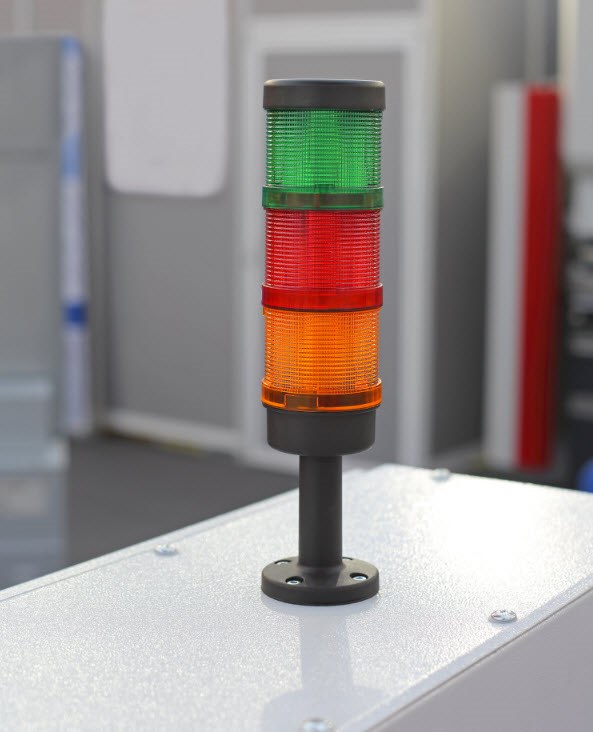 Figure 1 Industrial Stack Light
Figure 1 Industrial Stack LightTable 1 lists the standardized color-coding for industrial signal lights to indicate the status of manufacturing equipment or processes.
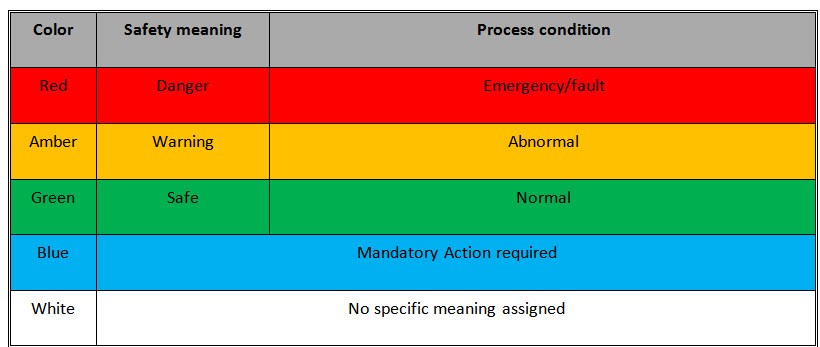
|
The TI Designs RGB LED Signal Tower for Industrial Automation Reference Design (TIDA-00979) lets you indicate your processes and manufacturing equipment in a smart and very flexible way. Aside the standardized color-coding shown in Table 1, you can define any other color at any time. Moreover, brightness control, flash lights or level indictors are easy to realize.
On top of common switch control for the different lamps, the reference design’s control scheme enables interfaces for an overall smart factory, like the IO-Link standard and wireless control.
The reference design uses two different Printed Circuit Board PCBs: a power and control PCB (Figure 2) and an LED control PCB (Figure 3). With a nominal input voltage of 24V, the LMZ35003 DC/DC converter module generates (with high efficiency) the required 12V for the three LEDs in series on the LED control board. The MSP430™ controller sets the different modes of the TLC5971 LED driver via the SPI. This 12-channel LED controller can independently set the LED current (maximum 60mA/channel) and brightness.
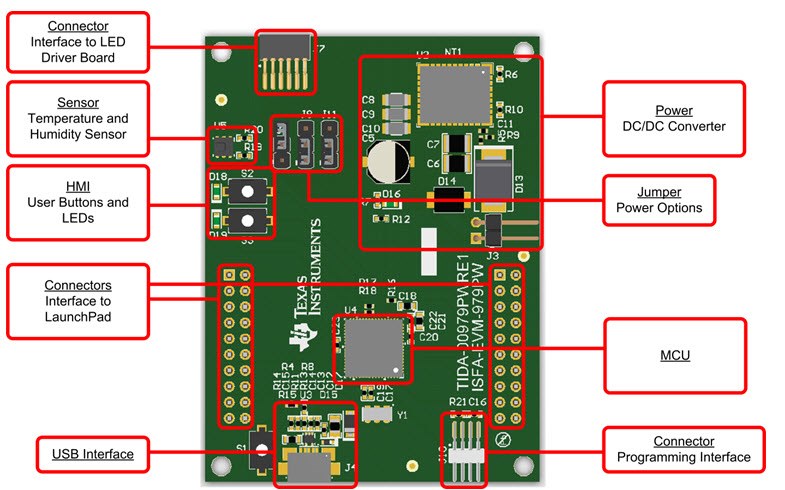 Figure 2 Power and Control
Board
Figure 2 Power and Control
Board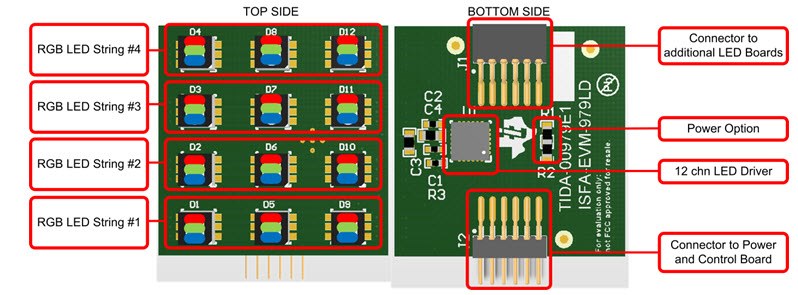 Figure 3 LED Driver and
Red/green/blue LEDs
Figure 3 LED Driver and
Red/green/blue LEDsIt is possible to control between one and five LED boards, or even more segments with a higher-power DC/DC converter. With such a flexible approach, you can realize many different styles and colors (Figure 4).
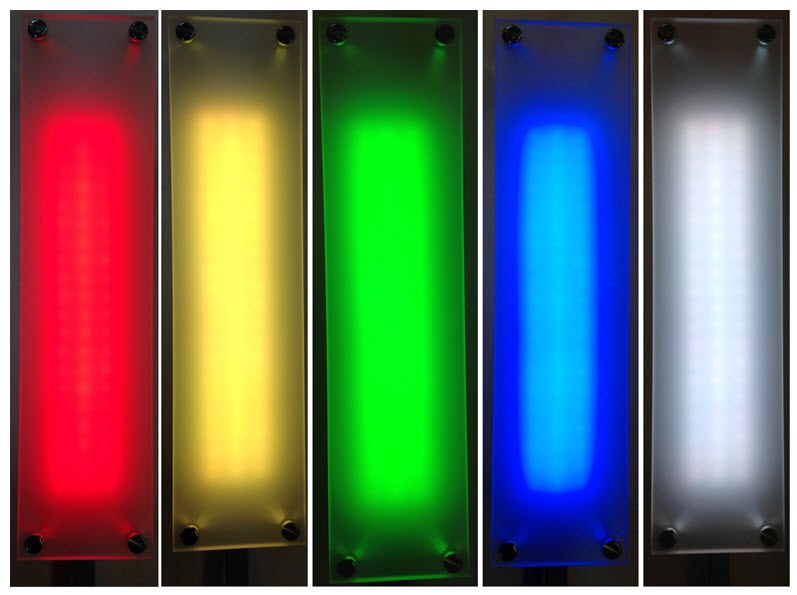 Figure 4 Five LED Segments behind
Plexiglas Showing the Main Colors
Figure 4 Five LED Segments behind
Plexiglas Showing the Main Colors